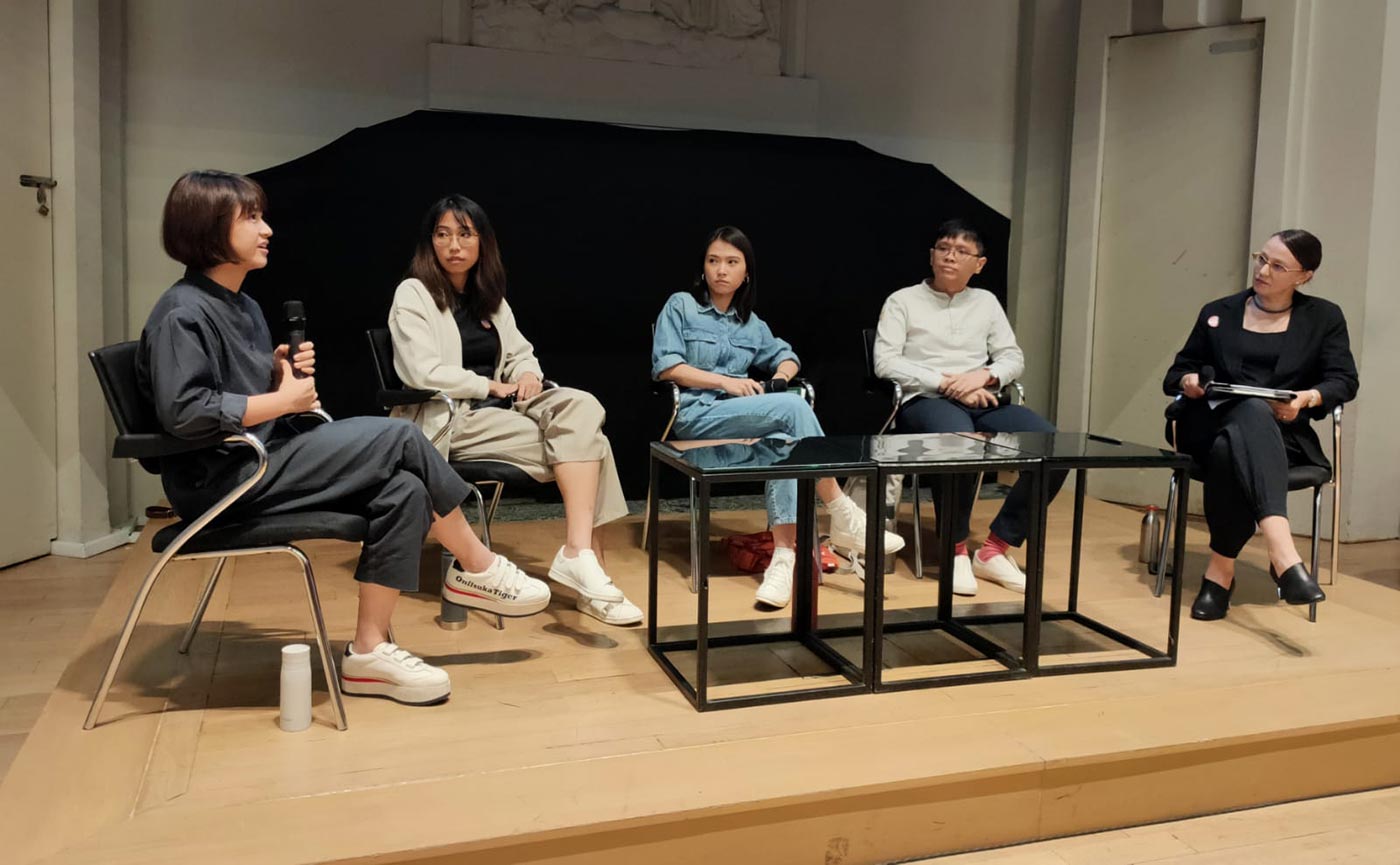Highlights from “Design in a post-pandemic world” panel discussion
What does design in a post-pandemic world look like? Here’s more from some of the young designers featured in the Visions of the Future exhibition.
Designers Teo Ying Xuan, Kevin Chiam, Poh Yun Ru, and Sheryl Teng joined design and architecture editor Narelle Yabuka in an inspiring discussion about the purpose of design in a world affected by the pandemic. The young designers also shared more about how their works imagine new rituals for new ways of living. Human relationships, empathy and a growing consciousness of interdependencies between man and the environment were some prominent themes. Here are some of the highlights:

1. There is a potential trend in user-centred design shifting to environment-centred design
Rather than thinking about ourselves or the user when it comes to designing products, there is a potential shift to thinking about the environment in the wake of the pandemic. This means that in addition to being more sustainable, we are also more aware of our surroundings. We take more notice of the people, nature and things around us and how we work together as an ecosystem to our collective betterment.
2. The post-pandemic world has its downsides but opens up more avenues and resources for collaboration for designers to design for impact
We may be already tired of staring at people on a screen, but admittedly, moving a lot of things online has made things more accessible, such as resources for designers. Additionally, designers know that they can design for impact and when faced with a global challenge, they were able to collaborate and come up with ideas and initiatives to help us deal with the pandemic
3. Realising what’s really essential helps to spark more innovation.
COVID-19 accentuates our relationships with our surroundings and items when we started spending more time at home. This means we began to appreciate the things we have, even objects lying around at home. We got more opportunities to examine everyday objects and how we experience them; to have a deeper realisation on what was useful and what was not. These realisations can spark more innovation.
4. It is important for designs to arise from people’s needs, not just commercial requirements or objectives
Designers are often told to design products that can be sold to the market. But what defines the market? These emerging designers are interested in the process of production and the benefits it brings. Learning about the processes of how products are made builds a connection between the user and the product and through this, people appreciate the product a lot more. Additionally, building a relationship between the user and product prevents products from being thrown away too frequently and discourages a “buy and throwaway” culture. (p.s. If you’re interested in this topic, you might like the R for Repair exhibition, where designers have redesigned broken objects or objects in disrepair).
Watch the full panel discussion here and visit the Visions of the Future website to see the designers’ works in the virtual exhibition. You can also visit the events page to find out when the next panel discussions and podcasts featuring the designers will be.







